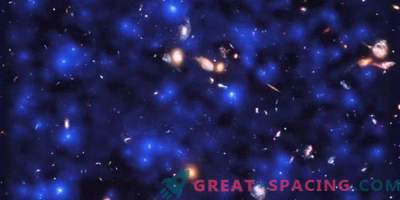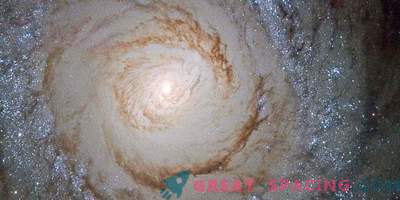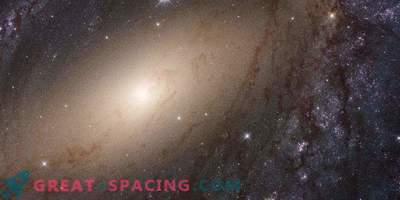
Over the past 50 years, scientists have made significant progress in understanding the process of galaxy formation. But there are still important questions about how they scatter the diffuse gas of the intergalactic medium into stars. Recent theoretical models have suggested that the early phase of galaxy formation is associated with an era when there was a lot of gas in them, but they were not effective in creating stars. Direct evidence of the dark phase is not yet elusive, but we know that dark galaxies do not emit much visible light.

One of the new candidates for a dark galaxy identified by a combination of spectral data (left) and gas reflection (middle) and stars (right). Candidate's location is marked with a red circle.
However, there are ways to find such objects. An international team of researchers led by Dr. Raffaella Anna Marino and Professor Sebastiano Cantalupo from the Department of Physics at Zurich Swiss High School took up this task. They managed to find 6 candidates for dark galaxies. To overcome the obstacle, the team used quasars as beacons. They emit intense UV light that induces fluorescent radiation in hydrogen atoms - the Lyman-alpha line. As a result, the signal from any dark galaxies near the quasar receives momentum, making them visible. Such a fluorescent light was used in searches before, but now the analysis was carried out at more distant distances.
Scientists received complete spectral information for each of the candidates. Deep observations (10 hours each) made it possible to effectively see candidates from other sources. Of the original 200 Lyman-alpha emitters, 6 areas remain that are unlikely to become normal stellar populations with active stellar birth, making them reliable candidates for dark galaxies.
These achievements were made possible by the MUSE instrument at the Very Large Telescope of the European Southern Observatory (Chile). The device did without filters and looked much farther than it was previously available.










































